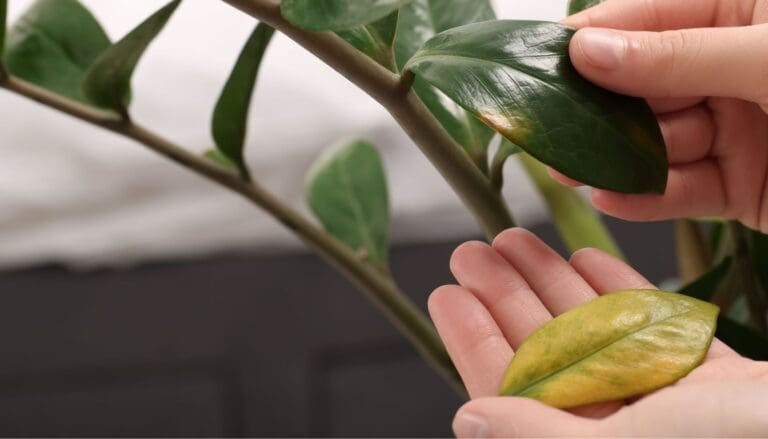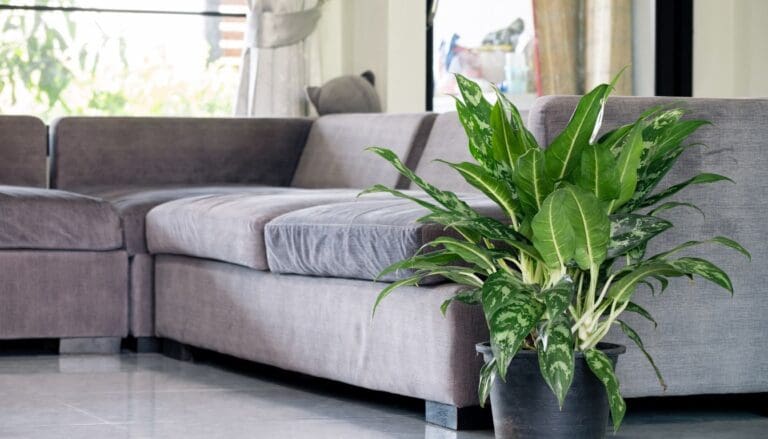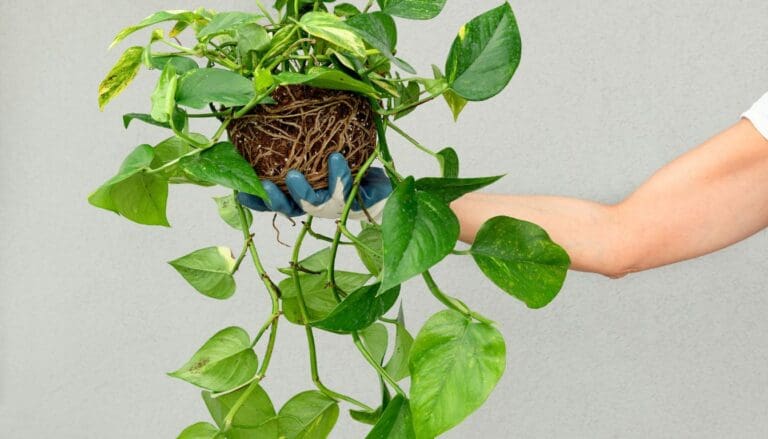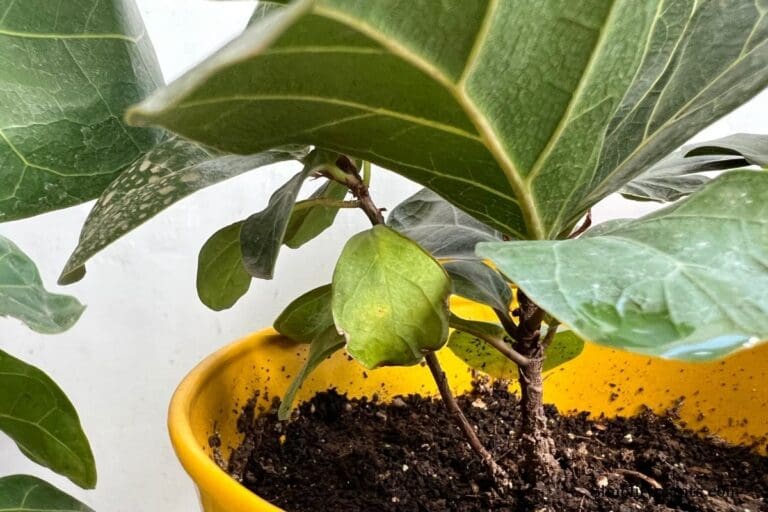Best Soil Mix For Spider Plant: Commercial Mix+D.I.Y. Soil Recipes
Soil is the growing medium that provides your spider plants with all the essential nutrients needed by them for healthy growth. But every plant has different needs, and thus the requirement of soil also varies. So, What is the best soil for spider plants? Let’s find out!
Spider plants will do well in almost any nutrient-rich and well-draining soil. For an ideal mix, choose any good potting soil and mix a part of perlite or pumice for aeration along with a handful of compost or worm casting for the spider plant’s nutritional need. Avoid garden soil as it is too heavy for a spider plant.
Choosing the right type of soil is crucial for the growth of the spider plant. Whether your spider plant will thrive or die will depend upon the potting medium you choose.
Thus, today we shall learn all the soil mix secrets and find out what is the best soil for a spider plant.
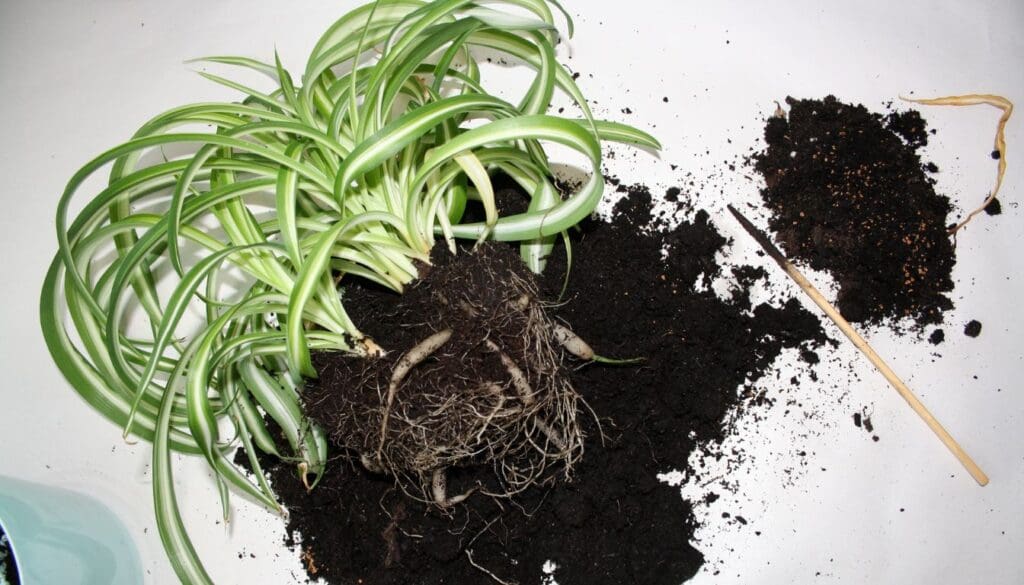
Please note: Simplify Plants is reader-supported. Some links in the post are affiliate links and I get a commission from purchases made through links in the post.
Factors to consider while choosing a good soil mix
To understand the spider plant’s soil need, you needn’t learn all the science behind it. There are a few simple factors to keep in mind. These include:
- How nutrient-rich is the soil?
- Does it drain well?
- Does the soil hold some moisture?
- How is the aeration in the soil?
These are four crucial questions you need to ask to pick the right soil for your spider plant.
Spider plants are heavy root feeders. Thus, you need to have a nutrient-rich growing medium for the plant to thrive. If the plants don’t get enough nutrients from the soil, they are likely to die.
Another crucial factor while choosing the soil is its drainage capability. While sand doesn’t hold water at all, garden soil is one of the heaviest. Thus, it drains really slowly. Spider plant prefers a well-drained soil that doesn’t remain soggy at all time. But at the same time, it must hold nutrients for the plants to grow.
The moisture retention capacity of the soil is also a key element to consider. While succulent soil doesn’t hold moisture for a long period, a regular potting mix holds the moisture for an extended period. It would be best if you chose something in between for your spider plants to thrive.
Last but not least, aeration of the soil is also a crucial factor that affects the health of the plant. If the soil is tightly packed and doesn’t have enough aeration, the roots will suffer from various problems like fungal growth, root rot, etc.
After reading everything, I know you might be wondering that it is next to impossible to find the perfect soil mix for your spider plant. But that’s not true. You can create a perfect blend of elements that checks all the boxes for a spider plant. Let’s find out how!
What is the best soil mix for spider plants?
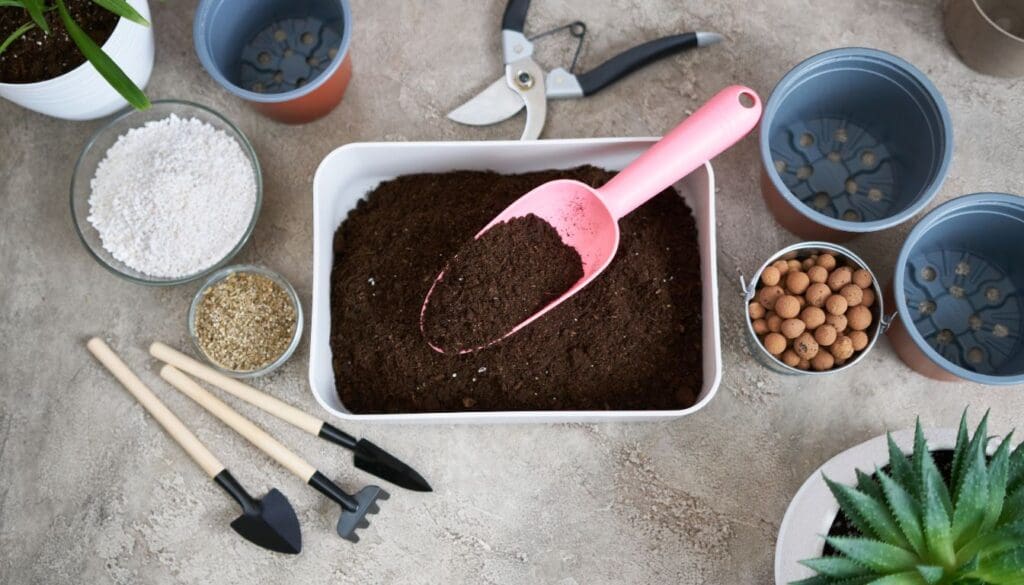
Spider plants are versatile and sturdy that can grow in almost any condition. However, not everyone’s plant will thrive and grow long and bushy.
Providing an appropriate growing medium is crucial for the growth of the plant. And after reading through the essential requirement of spider plants up above, you might be wondering if there is any perfect soil mix for them. There isn’t!
However, that doesn’t mean you cannot make one. It is pretty simple and straightforward to create your own soil mix. There can be 100’s of combinations that can work well for your spider plant.
But after trying a wide variety of soil mixes, I have boiled it down to two recipes that always work for me. So let’s dive right into it.
#Readymade Mix
Mixing the soil and creating a perfect blend for your spider plant can be time-consuming and challenging at the same time.
But you are in luck! You can buy a ready-to-go bag of perfect potting mix for your spider plant from rePotme.
rePotme is an excellent place where you can buy some readymade mixes for all your houseplants and succulents.
If you want to check out other mixes offered by them, you can check that out right here(rePotme).
#Recipe 1
- 3/4 part of organic potting soil (I usually go with Miracle Grow Indoor potting mix)
- 1/4 part of perlite or pumice.
- A handful of compost.
- A handful of coco chips.
#Recipe 2
- Mix one part of succulent soil (We prefer Hoffman Organic Cactus and Succulent Soil Mix)
- Add a part of peat moss/cocopeat
- Add a part of the compost.
- Spread a handful of worm castings on top.
Both of these mixes work exceptionally well for a spider plant. The first recipe is quite simple and straightforward.
We take a majority portion of the organic potting mix, which contains most of the organic matter and nutrients we need. However, the only problems with it is aeration and water retention.
The potting mix in itself retains moisture for too long. Thus, adding a part of perlite and some coco chips helps with aeration and reduces the soil mix’s moisture retention capacity.
Now with all that taken care of, we just need a handful of compost to cover the plant’s nutritional needs. Just mix all of these together, and you are good to go with a balanced soil mix for your spider plant.
The second soil mix is also equally effective. If you don’t have a regular potting mix in hand, you can use cactus or succulent soil to make a well-balanced mix as well.
For this, we take a part of succulent/cactus soil and mix it with equal parts of compost and peat moss.
While the succulent soil works as a base, it doesn’t hold the moisture very well, so adding a part of peat moss and compost can help with the moisture retention capacity. The compost also provides necessary nutrients for the growth of your spider plant.
Can I use cactus soil for spider plant?

No, you cannot use cactus/succulent soil for a spider plant. Spider plant prefers moisture in the soil while succulent and cactus prefer dry soil. Thus the mix doesn’t hold the moisture very well.
If you throw in a bag of succulent soil and plant a spider plant in it, then the plant will likely suffer from slow growth and dehydration. The plant roots will remain dry, and thus the leaves will start drooping and turning brown.
So, what can you do about it? We need to add something to the mix that can hold moisture long enough. Adding a part of cocopeat, compost, or peat moss can help with the water retention capacity of the soil. Thus, that can make it work for your spider plant.
However, make sure you don’t add too much compost because that can affect the soil’s pH level, which in turn affects the overall growth. A healthy mix of peat moss and compost with succulent soil shall do well.
When to repot spider plant?

Spider plants grow pretty fast, and you need to repot them in a year or two. But how will you understand whether it’s the right time to repot your spider plant or not?
If your spider plant is root bounded or it has outgrown the current pot size, then you need to repot your spider plant anytime soon. Some of the visual sign that spider plants give you when it gets pot bound include:
- Stunted growth
- Roots coming out of drainage hole
- Droopy leaves
- Yellow or browning of leaves
- Pot starts expanding or breaking down
If you notice any of these signs, you need to repot your spider plant immediately.
Although it would be best if you wait until spring or early summer before repotting them. As winters are a dormant month for the plant, repotting them in fall and winter can affect the plant’s growth.
Also, it is recommended to scrape off the old soil and fill the pot with fresh soil so that the plants have nutrients to feed on.
What kind of pot to use for spider plant?
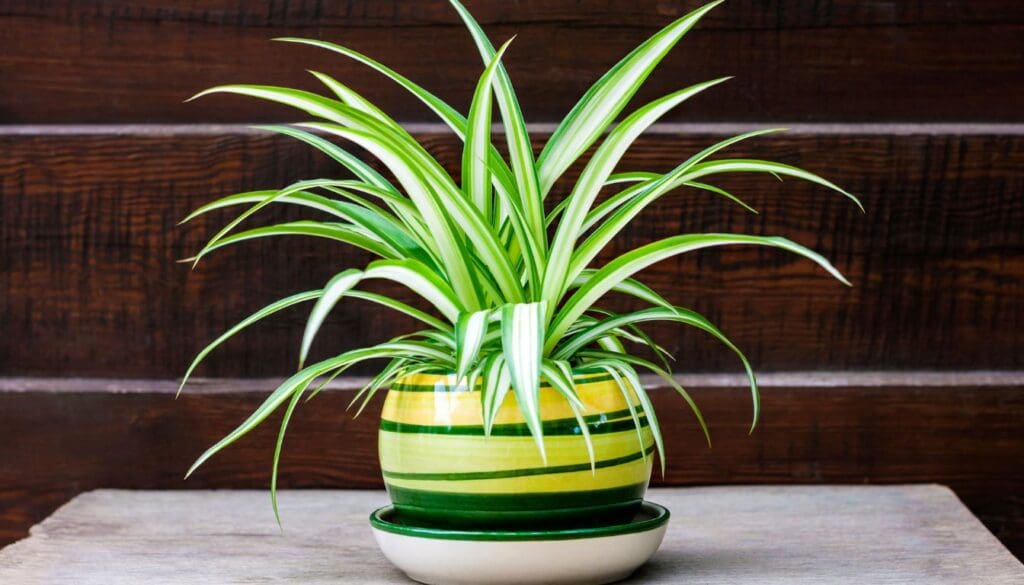
Spider plants can be kept in almost any kind of pot. Right from plastic pots to ceramic and even terracotta pots works equally well for the spider plant.
The size of the pot you choose shall depend upon the plant. Ideally, it is recommended to go with two sizes of bigger pots than the current one.
If your spider plant is currently potted in a 4″ pot, you need to go with a 6″ pot next. Always move them to a pot 2″ bigger than the previous one. If you go too big, then that can impact the growth of roots and the plant as well.
Also read: Pot size and its impact on the growth of the plant.
Final Thoughts
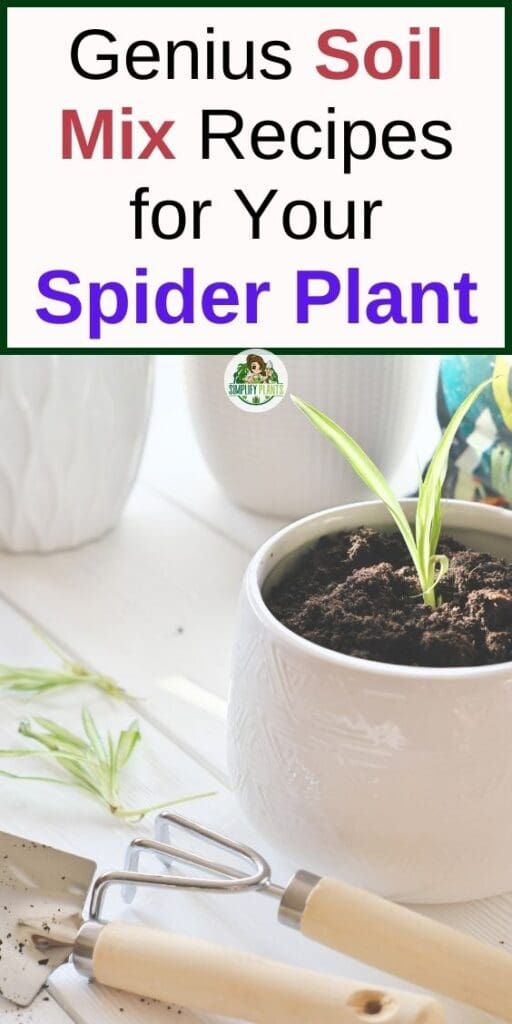
If you haven’t gone through the entire post and skipped to the conclusion directly, I would recommend checking our two soil mix recipes above. Apart from that, here is what you need to know.
Spider plants can grow in a wide variety of living environments, including different soil mixes.
However, not all types of soil mixes have essential nutrients that can support healthy plant growth. The moisture requirement of the plant also affects the soil mix you choose.
For spider plants, it is recommended you choose nutrient-rich, well-draining soil that holds moisture for some time. The soil mix must not get soggy but should hold the moisture long enough. Aeration is also a crucial factor to consider.
Source: Spider Plants Introduction, Spider plant care.
Recommended Garden Supplies
| Product Image | Our Recommended Gardening Supplies | Check Offers! |
|---|---|---|
Top Top
Top
Top
Top
Top
Top
Top
Top | rePotme Houseplant and Tropical Classic Potting Soil Mix | Check Offer On Amazon |
 Top
Top
Top
Top
Top
Top
Top
Top | Espoma Organic Indoor Plant Food | Check Offer On Amazon |
 Top
Top
Top
Top
Top
Top
Top
Top | GooingTop LED Grow Light 6000K Full Spectrum Clip Plant Growing Lamp | Check Offer On Amazon |
 Top
Top
Top
Top
Top
Top
Top
Top | Soil Moisture Meter | Check Offer On Amazon |
 Top
Top
Top
Top
Top
Top
Top
Top | Govee Hygrometer Thermometer, Bluetooth Enabled! | Check Offer On Amazon |
 Top
Top | LEVOIT Humidifiers for Large Room(Best For Plants) | Check Offer On Amazon |
 Top
Top
Top
Top
Top
Top
Top
Top | Upgraded DIY Automatic Drip Irrigation Kit, 15 Potted Houseplants Support | Check Offer On Amazon |
 Top
Top
Top
Top
Top
Top
Top
Top | Stainless Steel Heavy Duty Gardening Tool Set | Check Offer On Amazon |
 Top
Top
Top
Top
Top
Top
Top
Top | Bonide Insecticidal Soap | Check Offer On Amazon |
 Top
Top
Top
Top
Top
Top
Top
Top | Bonide 32 oz Spray Neem Oil for Organic Gardening | Check Offer On Amazon |
 Top
Top
Top
Top
Top
Top
Top
Top | Garden Safe Fungicide | Check Offer On Amazon |

